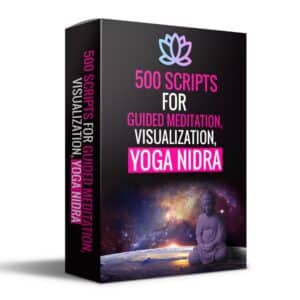This worksheet is designed to help you navigate and regulate your emotions through mindfulness. Emotion regulation involves understanding, accepting, and managing your feelings in a healthy way. Mindfulness, the practice of being fully present and engaged in the moment, can be a powerful tool in achieving better control over your emotions. By directing your attention to the present and observing your thoughts and feelings without judgment, you can gain insights into your emotional patterns and learn to respond to your emotions more effectively.
Understanding Emotion Regulation and Mindfulness
Emotion regulation is crucial for mental well-being and resilience. It allows you to experience your emotions without being overwhelmed by them. Mindfulness enhances emotion regulation by:
- Increasing awareness of emotional triggers.
- Reducing impulsivity and reactive behaviors.
- Enhancing your ability to engage with difficult emotions calmly and constructively.
Benefits of Mindfulness for Emotion Regulation
- Improves self-awareness: Helps you recognize and understand your emotions as they arise.
- Encourages acceptance: Teaches you to accept your emotions without judgment, reducing distress.
- Fosters resilience: Builds your capacity to cope with emotional challenges in a healthy way.
Mindfulness Exercises for Emotion Regulation
1. Mindful Breathing
Purpose: To center your mind and create a sense of calm that can help in managing overwhelming emotions.
How to Do It:
- Find a quiet place to sit or lie down comfortably.
- Close your eyes and bring your focus to your breath.
- Breathe slowly and deeply, in through your nose and out through your mouth.
- Notice the sensation of the air moving in and out of your body.
- If your mind wanders to thoughts or emotions, acknowledge them and then gently bring your focus back to your breath.
- Continue for 5-10 minutes.
2. Body Scan Meditation
Purpose: To develop awareness of physical sensations associated with emotions, helping you to recognize and address them early.
How to Do It:
- Lie down or sit in a comfortable position. Close your eyes and take a few deep breaths.
- Starting at your toes, gently shift your attention through different parts of your body, noticing any tension, discomfort, or other sensations.
- As you move your focus, breathe into each part of your body, imagining tension melting away with each breath.
- If you notice areas where emotions are stored (tight chest for anxiety, heavy stomach for sadness), acknowledge these feelings without trying to change them.
- Spend about 15-20 minutes on this exercise.
3. Mindful Observation of Emotions
Purpose: To help you observe your emotions without getting caught up in them.
How to Do It:
- When you notice a strong emotion, pause and take a few deep breaths.
- Observe the emotion as if you are a curious scientist who has never experienced this feeling before. What is its name? Where in your body do you feel it?
- Imagine the emotion as a wave, seeing it rise and fall. Remind yourself that emotions are temporary and will pass.
- Practice non-judgmental acceptance of the emotion, giving yourself permission to feel it fully without criticism.
- Use this technique whenever you experience intense emotions.
4. Mindful Response to Emotions
Purpose: To cultivate a mindful response to emotions instead of reacting impulsively.
How to Do It:
- When you feel a strong emotion, acknowledge it and take a deep breath.
- Ask yourself, “What do I need right now?” This could be a moment of pause, a kind word, or a supportive action.
- Consider a response that would be helpful and healing rather than reactive. It might involve taking a break, speaking kindly to yourself, or seeking support from a friend.
- Take action on the response you’ve identified, maintaining awareness of your emotions throughout the process.
Incorporating Mindfulness into Daily Life
- Practice regularly: The more you practice mindfulness, the more naturally it will come to you in moments of emotional distress.
- Set reminders: Use notes or alarms as reminders to pause and practice mindfulness throughout your day, especially during known stress points.
- Journaling: Keep a journal of your emotions and mindfulness practices. Note any patterns or insights that emerge.
- Mindful communication: Practice mindfulness during conversations, paying attention to your emotions and responses without judgment.
Remember, the goal of mindfulness in emotion regulation is not to avoid or suppress your emotions, but to experience them fully with understanding and compassion. With practice, you’ll find yourself responding to your emotions with greater ease and resilience, leading to a more balanced and fulfilling life.
Discover the transformative power of mindfulness with our carefully curated collection of printable mindfulness worksheets and exercises. Each worksheet is designed to guide you through exercises that cultivate awareness, reduce stress, and promote emotional well-being. From grounding techniques to breathing exercises, these tools are your allies in navigating the complexities of daily life with a sense of calm and presence. Whether you’re a beginner or looking to deepen your practice, these printable resources are tailored to meet your needs.
Save up to 88% with our Bundles
Instant Download
- Digital Download
- Digital file type(s): 1x PDF
- Your files will be available to download once payment is confirmed

![Printable Mindfulness Exercises & Worksheet for Emotion Regulation [PDF]](https://guidedmeditationscript.com/wp-content/uploads/2024/02/Printable-Mindfulness-Exercises-Worksheet-for-Emotion-Regulation-PDF.jpg)
![Printable Trauma-Sensitive Mindfulness Exercises & Worksheet [PDF]](https://guidedmeditationscript.com/wp-content/uploads/2024/02/Printable-Trauma-Sensitive-Mindfulness-Exercises-Worksheet-PDF-300x150.jpg)
![Printable Mindfulness Exercises & Worksheet for Elementary Students [PDF]](https://guidedmeditationscript.com/wp-content/uploads/2024/02/Printable-Mindfulness-Exercises-Worksheet-for-Elementary-Students-PDF-300x150.jpg)
![15,000 Positive Affirmations Bundle [PDF]](https://guidedmeditationscript.com/wp-content/uploads/2024/01/15000-Positive-Affirmations-Bundle-PDF-1-300x300.webp)

![150 Best Hypnosis Scripts [PDF] Bundle](https://guidedmeditationscript.com/wp-content/uploads/2023/11/150-Best-Hypnosis-Scripts-PDF-Bundle-300x300.jpg)

![200 Printable Mindfulness Exercises Worksheets Bundle [PDF]](https://guidedmeditationscript.com/wp-content/uploads/2024/02/200-Printable-Mindfulness-Exercises-Worksheets-Bundle-PDF-300x300.jpg)


![Printable Mindfulness Exercises & Worksheet for Pain Management [PDF]](https://guidedmeditationscript.com/wp-content/uploads/2024/02/Printable-Mindfulness-Exercises-Worksheet-for-Pain-Management-PDF-300x150.jpg)
![Printable Easy Mindfulness Exercises & Worksheet for Adults [PDF]](https://guidedmeditationscript.com/wp-content/uploads/2024/02/Printable-Easy-Mindfulness-Exercises-Worksheet-for-Adults-PDF-300x150.jpg)